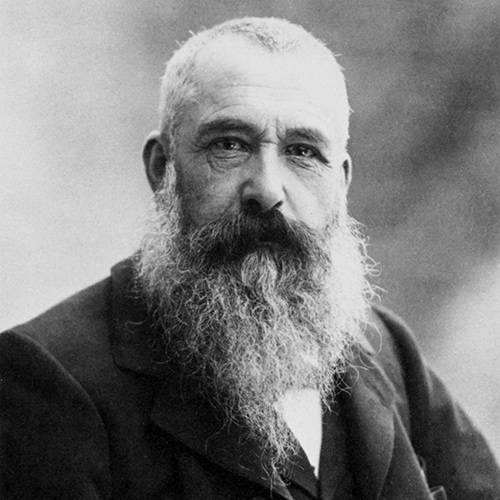
Portrait of Claude Monet by Nadar
Monet. The name alone conjures up vivid images: water lilies in Giverny, haystacks in the French countryside, trains pulling into Gare Saint-Lazare in Paris, the façade of the Rouen cathedral. A pioneer of the Impressionist movement, Claude Monet created paintings capturing nature’s fleeting moments—and rendered the scenes unforgettable.
Monet first concentrated on landscapes and seascapes because of his fascination with how the changing atmospheric elements of light, clouds, sun, and wind transformed the scenes before him. Later at his home and garden in Giverny, he found a new setting in which to explore that inspiration of a lifetime. Art historian Joseph P. Cassar leads an in-depth look at one of the most influential and best-loved Impressionist painters.
July 10 The Early Years
In 1859 Monet attended the Swiss Academy in Paris and focused on portraiture, particularly caricatures of musicians, actors, and artists that he exhibited at a photography shop in Le Havre. His first interest in painting outdoors was inspired by locations such as the forest of Fontainebleau, Normandy and its coastal town of Étretat, and the garden of his rented house in Argenteuil.
July 17 The Birth of Impressionism
Along with artists including Bazille, Pissarro, Renoir, and Sisley, Monet organized the first Impressionist exhibition in 1874. He affirmed himself as a pioneer of the movement, even though he did not always take part in later collective shows. During this period of his career, he focused on paintings in a series, finding subjects for multiple works in the Gare Saint-Lazare, fields of haystacks, cathedrals, and urban views of London and Venice.
July 24 A Home in Giverny
In 1883, Monet rented a house in the village of Giverny and fell in love with the place. Seven years later, he bought his own residence with a large piece of property, where he installed a pond and developed meticulously designed gardens. There he found enough to paint for the rest of his life, spending 43 years in the colorful world he created.
July 31 The Water Lilies Installation
Monet’s monumental series of Nymphéas paintings at the Musée de l’Orangerie in the Tuileries Gardens was the artist’s final legacy to France. He had a major influence on the design of the setting for the eight large-scaled works, which placed them in a pair of oval rooms that allowed viewers to imagine themselves on the banks of his water lily–covered pond in Giverny. Monet never saw the finished installation: He died in 1926, a year before his longtime friend Georges Clemenceau, who was instrumental in facilitating his gift to the state, represented the late artist at the galleries’ opening.
4 sessions
World Art History Certificate elective: Earn 1 credit*
General Information
*Enrolled participants in the World Art History Certificate Program receive 1 elective credit. Not yet enrolled? Learn about the program, its benefits, and how to register here.